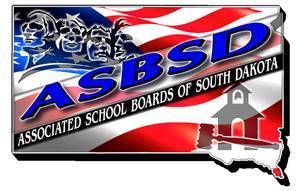A first glimpse at a proposal to improve teacher salaries in South Dakota was provided at Monday’s Legislative Planning Committee meeting.
ASBSD Executive Director Wade Pogany, SASD Executive Director Rob Monson and Mitch Richter of the South Dakota United School Association presented the collaborative effort of their groups, which would call for the establishment of the Teacher Salary Enhancement Fund (TSEF), to committee members, assigned with completing a long-term study of K-12 education and its funding components.
“We know this is a long-term discussion. This is going to morph,” Pogany said of the proposal, but added “without some kind of movement, we’re drowning,” in comparison to teacher pay in neighboring states.
TSEF dollars, which would be appropriated annually in addition to state aid dollars, would be the conduit to providing funding for districts to enhance teacher pay in their district. The proposed teacher pay enhancement plan was presented and approved by the ASBSD Board of Directors.
“The goal is to get us to a minimum base that brings (every teacher) up (in pay),” Pogany said.
Based on the current proposal, school districts would have the opportunity to receive TSEF funding if they meet criteria included. However, the criteria are only mandated to receive TSEF dollars, districts have the choice to do so.
Criteria for TSEF dollars includes:
- A reserve balance of 40 percent or less that of its general fund. Districts with a reserve above 40 percent as of June 30, 2015 are eligible to receive TSEF dollars if they reduce their reserve to 40 percent or less by June 30, 2019. Districts must annually reduce their reserve by ¼ the amount above 40 percent each year from 2015-19.
- Districts must agree to increase their minimum base salary by three percent annually for three years beginning in 2015-16. If a district’s minimum base salary is under $32,000 in the 2014-15 school year it is eligible to receive additional funding if they annually increase the minimum base salary by 1/3 the salary difference from $32,000.
- If the PSA increase is above two percent, half of the funds from the percentage above two percent (e.g. if districts receive a 2.5 percent increase, half of the dollars from the .5 percent) must be put towards teacher salaries.
The proposal also calls for an additional penny increase from June-August to the state’s sales tax. Revenue generated from the tax is estimated at $40 annually, or $4,000 per teacher, which would be the funding mechanism for TSEF.
“Is $4,000 enough? I would say no. But, is it a realistic goal…probably,” Monson said. “If we were to catch up with (states) you see ahead of us, we would need $80 million.”
“The most important thing we can put in front of students isn’t programs or projects, but good people.”
Committee member Sen. Bruce Rampelberg said a tax increase would be tough to get passed in the legislature, but believed the public would be more receptive to the idea. A poll presented by the Argus Leader in a story on the proposal shows favor for the sales tax increase to improve teacher salaries at the time of post.
In addition, the proposal would require an appropriation of an amount to be determined from the state for the 2015-16 and 2016-17 school years to begin funding TSEF.
The proposal would also allow the school board of a district to provide teachers with a signing bonus, moving expense, college loan payment or other market-based resources as they see fit.
Committee members praised the efforts in preparing and presenting the proposal as a starting point for conversation on how to improve teacher salaries.
“I think your model is solid. It’s just going to be a matter of drilling into the details,” Committee Chair Rep. Scott Munsterman said.
A follow up meeting for the planning committee is tentatively scheduled after the November elections.
For additional information from the meeting and updates on the proposal, check the ASBSD Blog and follow us on Twitter @asbsd_org.
